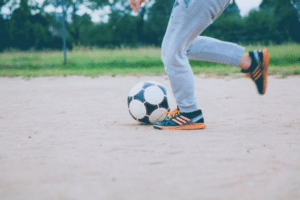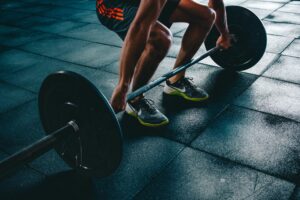
Top 5 Ways to Adapt to Hypermobility
Top 5 Ways to Adapt to Hypermobility
Here are the top 5 ways to adapt to hypermobility.
Adapt to Hypermobility Tip 1: Muscular Strength
Individuals with hypermobility often experience pain in their affected joints which can lead them participating in less exercise than those without hypermobility. Increasing muscular strength is important as it can stabilise these joints by improving the ability to control movements within a safe range of motion.
‘Closed-chain’ exercises (when the body part that is doing the work is in a ‘fixed’ position and doesn’t move) are recommended as they reduce the risk of going into extreme ranges of motion. They also often use multiple joints during each exercise which increases joint stability. It is important to start with a light resistance and slowly increase to minimise the risk of injuries when beginning exercise.
Adapt to Hypermobility Tip 2: Muscular Endurance
Posture is an example of muscles with good endurance. Our core and back muscles are constantly adjusting our position to maintain our upright stance.
Different exercise modes train endurance such as:
- Aerobic exercise such as walking, rowing, cycling or swimming are all safe and low impact
- Resistance training with light weights and high repetitions
- Individual and team sports that have little or no collisions and repetitive bouts of effort such as tennis, netball, and squash
Adapt to Hypermobility Tip 3: Proprioception
Hypermobility often results in people having poor awareness of their body in space. Proprioceptive training improves spatial awareness by challenging the individual to ‘feel’ where their body is in space. Feedback is sent to the brain during a movement which will try to correct or fine-tune the movement.
Exercises can include:
- standing on one leg, tightrope walks and toe taps. Touching other body parts such as finger to nose or hand to hand can also. Most proprioceptive exercises
- performing the exercises with eyes closed or on an unstable surface will make them more challenging if it is safe to do so. An example is performing a squat on a bosu ball.
Adapt to Hypermobility Tip 4: Gross Motor Development
Hypermobile individuals are less likely to participate in structured  exercise which results in them having reduced gross motor skills compared to their same age counterparts. Jumping, skipping, kicking, catching and throwing replicated in a gym environment is a safe way to acquire skills. Incorporating hurdles, smaller balls and uneven surfaces can further challenge the individual. This can improve confidence and long-term athletic development which can increase participation in organised sport.
exercise which results in them having reduced gross motor skills compared to their same age counterparts. Jumping, skipping, kicking, catching and throwing replicated in a gym environment is a safe way to acquire skills. Incorporating hurdles, smaller balls and uneven surfaces can further challenge the individual. This can improve confidence and long-term athletic development which can increase participation in organised sport.
Adapt to Hypermobility Tip 5: Maintain Healthy Weight
Extra stress on affected joints can make pain and movement difficulties worse. Maintaining healthy weight requires a combination of good dietary choices and consistent exercise. Following current exercise guidelines can assist in maintaining a healthy weight.
- Children and adolescents should aim for 1 hr of moderate to vigorous aerobic exercise per day. Game play scenarios and structured sport can help achieve this
- Adults should be aim for at least 150 minutes of moderate intensity or 75 minutes of vigorous intensity exercise per week.
These guidelines are the recommendations for the general population. An appointment with a dietician may be necessary to provide diet education and modification.
If you struggle with hypermobility issues or symptoms, book an appointment at Pivotal Motion, the physio Brisbane relies on for quality advice and professional services. Call on 07 3352 5116 or book online today.




